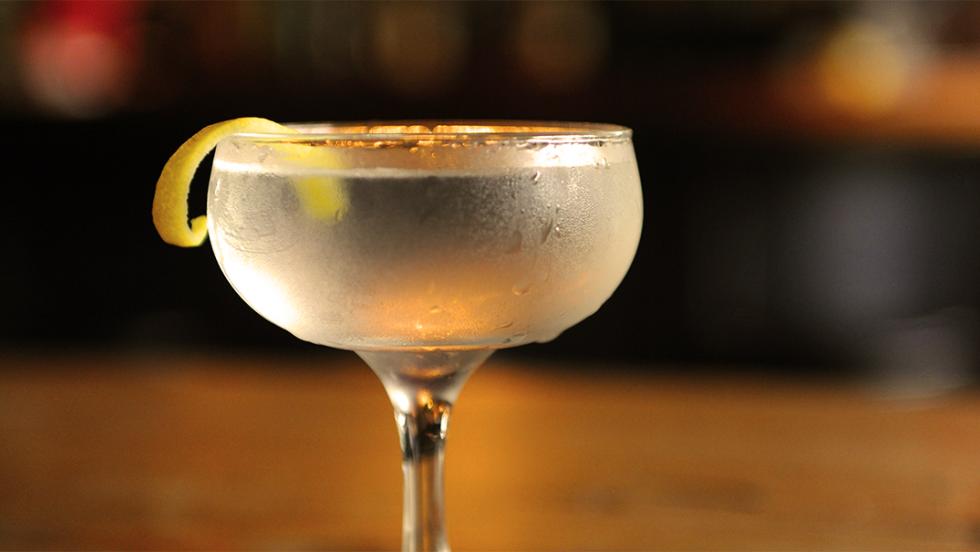Where DID this classic cocktail originate?!
The Martini is the timeless standard-bearer of the cocktail world. New cocktails spring up and are forgotten about just as quickly, but the Martini has kept its place for over 150 years.
You would think that a cocktail this famous would have a well-documented origin story, but cocktail lore gets murky in the Gilded Age. By the time the Martini was widespread enough that writers and journalists became interested in its origins, they found that the cocktail might have been originally called the “Martinez”, “Martine”, “Martigny”, or the“Martineau”, each with their own neat and tidy anecdote to explain the name.
Did a prospect in Martinez, California order up a new cocktail to celebrate striking gold?
Was it a favorite of John D. Rockefeller, served up to him by bartender Martini di Arma di Taggia of the Knickerbocker Hotel?
Was it named after the brand of vermouth, Martini & Rossi? That last one isn’t very sexy, but maybe the most likely.
Regardless of how it got its name, the early forms of the Martini were essentially a Gin Manhattan. As David Wondrich put it in Imbibe! (2010), “the way mixology was practiced in the Gilden Age, to try one combination was to try them all. The whiskey version was merely the most successful – at first, anyway.”
By the 1880s something that sounds like the Martini had become widespread enough that Jerry Thomas described the cocktail in How to Mix All Kinds of Plain and Fancy Drinks (1887):
Martinez Cocktail (Use small bar-glass.)
Shake up thoroughly, and strain into a large cocktail glass. Put a quarter of a slice of lemon in the glass, and serve. If the guest prefers it very sweet, add two dashes of gum syrup.
As described, the Martinez looks like a Wet Martini (a Martini made with more vermouth than gin) that someone has gotten a little too creative with. By the end of the century, George J. Kappeler's describes a “Martini Cocktail” in Modern American Drinks (1895) that looks much the same.
Over the next few decades, the Martini would stop pretending to be a Gin Manhattan, dropping the bitters and focusing instead around the interplay of gin and vermouth. The lemon peel garnish used in the 1800s had also been ditched in favor of the iconic olive garnish. The ratio of gin to vermouth varied from one recipe to the next, but recipes gravitated towards that magical ratio of 2:1 gin to vermouth.
Early recipes may have been heavy on the vermouth to cover up the turpentine added to bad gin (yes, really). As gin quality improved, off-sweet Old Tom Gin was dropped in favor of quality Dry Gin, and thus the Dry Martini was invented.
In modern parlance, the “Dry” in “Dry Martini” refers to a lack of vermouth, but it was originally a reference to the style of gin. Weirdly, a Dry Martini could still be sweet, using equal parts gin and vermouth (sometimes called “The Perfect”), or with sweet Italian vermouth in lieu of the dry French vermouth. And with the difficulty of importing (smuggling) quality vermouth in the prohibition era, cocktail lovers were forced to make do with less vermouth to cover the taste of crude bathtub gin.
Ratios of gin to vermouth as low as 8:1 were described in The Savoy Cocktail Book in 1930. Once prohibition was repealed, the ratio settled back to somewhere around 2:1 gin to vermouth as the standard Dry Martini. By the 1960s the Old Tom gins had all but disappeared from the American market, and the Martini made with dry gin became the norm.
Where does the Vodka Martini fit in? The Post-War Era saw tastes change, and Smirnoff’s aggressive marketing campaigns encouraged cocktail lovers to replace the gin in their cocktails with something more neutral, namely vodka. While the Vodka Martini was not a new invention (the “Vodka Martini”, “Rum Martini” and “Tequila Martini” were all referenced in the 1948 The Fine Art of Mixing Cocktails), the growing demand for lighter, less spirit-forward cocktails, made the Vodka Martini less of a weird aberration, and more of a sibling to the Martini. Because vodka is an unaged spirit that has been distilled to the point of removing virtually all flavor from its ingredients, vodka blends with whatever it’s mixed with.
As a Smirnoff ad from 1953 put it, “While they’d sooner die than admit it, many Martini drinkers don’t really like the taste of gin. Next time you see someone with that special Martini expression, tell him to try “The Martini with the Marvelous Taste”… Made with mellow Smirnoff Vodka instead of gin. It’s dry as dry can be; smooth as anything and makes delicious sipping… It leaves you breathless”.
Then what do the Apple Martini, Chocolate Martini, Espresso Martini, and the rest of the modern “tini” cocktails share with the traditional Martini? As it turns out, only the glass.
As Martinis have become so closely associated with the iconic conical “straight-up” cocktail glass, modern cocktail lovers have come to refer to anything served in a Martini glass as a Martini. Despite their dubious credentials as an authentic form of the Martini, they nevertheless illustrate how the Martini has become so ubiquitous that it has literally become synonymous with the word “cocktail”.

Ingredients:
1 dash Bitters
2 dashes Maraschino Liqueur
1 oz Old Tom gin
2 oz Vermouth

Ingredients:
2 oz Dry Gin
1/4 oz Dry Vermouth
Olive Garnish
Directions:

Ingredients:
2.5 oz Yellow Gin
1/2 oz (1 tbsp) Noilly Prat Vermouth
Lemon Twist

Ingredients:
3 oz Dry Gin
1 oz Dolin Dry Vermouth
If you choose to drink alcohol, Maine Spirits asks that you drink responsibly.
If you think you have a drinking problem, you should seek professional help.
Learn More